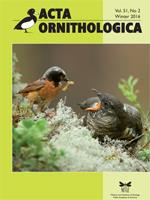In the present study, we used 37-year long dataset on Tawny Owls from the annual monitoring of nestboxes at a sample plot in Central Lithuania. We expected that Tawny Owls responded to changes in land use practices, stemming from a change in both political and economic system, which may affect prey abundance and composition, breeding performance and demography. To analyze temporal changes in monitored parameters, we divided the study period into three phases (1978–1989, 1990–2001 and 2002–2014), corresponding to different socio-economic conditions. The number of nesting pairs of Tawny Owls decreased significantly in the last 13 years of the study, but the number of successful pairs fluctuated without any trend. The clutch size and number of nestlings varied without significant trends, but nesting success improved over the last 13 years. Annual apparent survival probability of the female Tawny Owls did not vary significantly over the study period (model averaged values between 0.71 and 0.73). Owls occupied nestboxes irrespective to the distance from the agricultural land during the first two study periods, but since early 2000s, owls tended to occupy nestboxes located deeper in the forest. Birds and small mammals were similarly important as prey items by biomass. Since the 1990s, the share of Microtus voles significantly decreased in the diet, while that of birds increased. In summary, changes in the diet, improved nesting success of the Tawny Owl and tendency of nesting in forest interior may indicate ongoing complex responses to the changes in environmental conditions.
How to translate text using browser tools
1 December 2016
Breeding Performance, Apparent Survival, Nesting Location and Diet in a Local Population of the Tawny Owl Strix aluco in Central Lithuania Over the Long-Term
Gintarė Grašytė,
Saulius Rumbutis,
Mindaugas Dagys,
Rimgaudas Treinys
ACCESS THE FULL ARTICLE

Acta Ornithologica
Vol. 51 • No. 2
December 2016
Vol. 51 • No. 2
December 2016
breeding parameters
demography
diet
long term trends
monitoring
nestbox
owls




